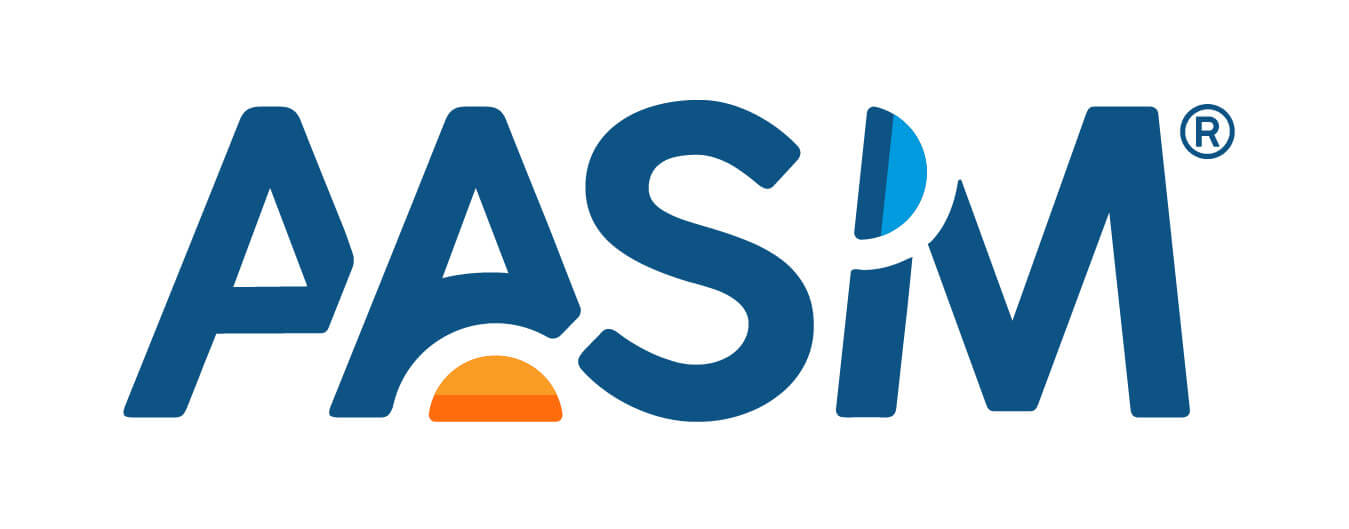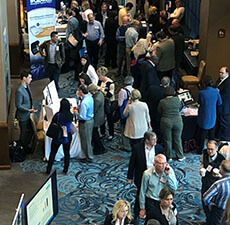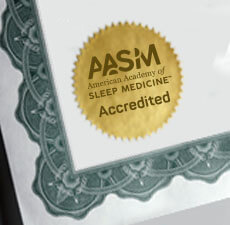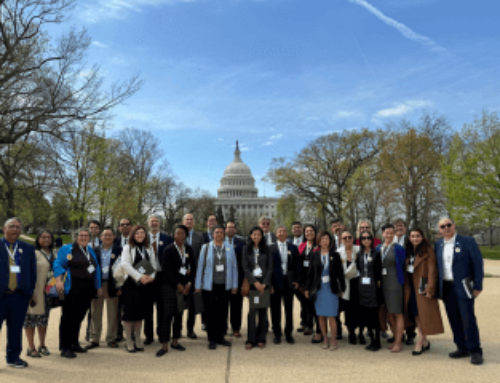The Centers for Medicare & Medicaid Services (CMS) released the 2022 physician fee schedule final rule earlier in November. The AASM has analyzed the publication and provides the following highlights for sleep clinicians.
A separate analysis of the Quality Payment Program final rule will be posted soon.
The 2022 conversion factor has been finalized at $33.5983, a 3.71% decrease from the 2021 conversion factor. This reduction is a result of the evaluation and management (E/M) code changes, implemented by CMS on Jan. 1, 2021. The revised values for the E/M codes were so significant that they triggered budget neutrality, which was originally calculated to be an estimated 11% reduction in reimbursement rates. However, after the 2021 final rule was published, the Consolidated Appropriations Act was enacted, allowing CMS to delay part of the budget neutrality payment reductions until 2022. Therefore, the remaining payment reduction of 3.71% has been finalized for implementation on Jan. 1, 2022. UPDATE: Following congressional action in December, CMS announced an updated 2022 physician fee schedule conversion factor of $34.6062.
The AASM national payment and RVU comparison documents have been updated and are accessible via the links below.
CMS will be updating clinical labor pricing, which has not been updated since 2002. The cost per minute for each clinical staff type was derived by dividing the average hourly rate by 60 to arrive at the per-minute cost. The potential impact of the clinical labor pricing update on specialty payment was largely driven by the fact that labor costs represent the direct practice expense (PE) inputs for each specialty. CMS shared anticipated clinical labor pricing effects on specialties, and while sleep medicine was not included, the potential impact on other related specialties and diagnostic testing facilities are included below. Some changes are due to the supply and equipment pricing update, which AASM is currently researching in relation to sleep medicine reimbursement. Implementation of the clinical labor pricing update will take place over four years transitioning from current pricing to final updated prices in 2025. The clinical labor rates will remain open for public comment over the four-year period, allowing specialties the opportunity to respond and provide input.
| Specialty | New Clinical Labor Pricing Change |
| Pediatrics | 1% |
| Psychiatry | 1% |
| Pulmonary Disease | 1% |
| Neurology | 1% |
| Clinical Psychologist | 0% |
| Diagnostic Testing Facility | -6% |
CMS will retain all services added to the Medicare telehealth services list on a Category 3 basis until the end of 2023. This will allow time for the agency to collect more information regarding utilization of the services during the pandemic, while providing stakeholders the opportunity to continue developing a case for permanent addition of services on a Category 1 or Category 2 basis, as appropriate.
Despite input from multiple stakeholders, including the AASM, requesting that the telephone E/M services codes 99441 – 99443 be permanently added to the telehealth list, the agency continues to believe that two-way audio/visual communications technology is the appropriate standard for telehealth services after the COVID-19 public health emergency has ended. These codes will not remain on the telehealth list after the public health emergency.
CMS is revising the definition of an interactive telecommunications system to permit use of audio-only communications technology for mental health telehealth services only under certain conditions when provided to beneficiaries located in their home. Audio/visual communication is required for all other telehealth services.
The agency finalized that after the first mental health telehealth service in the patient’s home, there must be an in-person, non-telehealth service within 12 months of each mental health telehealth service, but it will allow for limited exceptions to the requirement.
CMS is maintaining the requirement that distant-site physicians and practitioners must have the technical capability to use an interactive telecommunications system that includes two-way, real time, interactive audio and video communications at the time an audio-only telehealth service is furnished. The reason for using audio-only technology to furnish a telehealth service must be documented in the patient’s medical record.
A service-level modifier will be created to identify mental health telehealth services furnished to a beneficiary in their home using audio-only communications technology.
Expiration of Flexibilities for Direct Supervision Requirements
While the agency has solicited comments regarding virtual supervision beyond the public health emergency, no final decisions have been made. This issue may be addressed in the future, through the rulemaking process.
Interim Final Provisions in the 2021 PFS Final Rule
CMS is permanently establishing separate coding and payment for the longer virtual check-in service G2252, Brief communication technology-based service, e.g., virtual check-in, by a physician or other qualified health care professional who can report evaluation and management services, provided to an established patient, not originating from a related E/M service provided within the previous 7 days nor leading to an E/M service or procedure within the next 24 hours or soonest available appointment; 11-20 minutes of medical discussion. The reimbursement amount has been cross walked to the reimbursement for Current Procedural Terminology (CPT) code 99442.
Telehealth Originating Site Facility Fee Payment Amount Update
Due to the percentage increase in the Medicare Economic Index (MEI), the originating site facility fee for telehealth services, reported with HCPCS code Q3014, has increased to $27.59 for 2022. This is $0.57 higher than the originating site facility fee for 2021.
Drug Induced Sleep Endoscopy
- 42975 (Drug induced sleep endoscopy; with dynamic evaluation of velum, pharynx, tongue base, and larynx for evaluation of sleep disordered breathing; flexible, diagnostic)
CMS finalized the AMA/Specialty Society RVS Update Committee (RUC) recommendation of a work RVU of 1.90 and the RUC-recommended direct practice expense inputs as proposed.
Hypoglossal Nerve Stimulator Services
- 64582 (Open implantation of hypoglossal nerve neurostimulator array, pulse generator, and distal respiratory sensor electrode or electrode array)
- 64583 ((Revision or replacement of hypoglossal nerve neurostimulator array and distal respiratory sensor electrode or electrode array, including connection to an existing pulse generator)
- 64584 (Removal of hypoglossal nerve neurostimulator array, pulse generator, and distal respiratory sensor electrode or electrode array)
Despite AASM advocacy efforts for CMS to finalize the work RVUs for these three codes, consistent with the higher RUC recommendations, the agency finalized work RVUs of 14.00 for CPT code 64582, 14.50 for CPT code 64583 and 12.00 for CPT code 64584. However, CMS is finalizing the RUC-recommended direct practice expense inputs without refinement for all three codes.
Remote Therapeutic Monitoring/Treatment Management
CPT Codes 98975, 98976, 98977, 98980, and 98981
This family of codes, finalized for 2022 implementation, includes three practice expense only codes and two codes that include professional work. According to the code descriptors, these codes monitor health conditions, including musculoskeletal system status, respiratory system status, therapy adherence, and therapy response. These codes also allow non-physiologic data to be collected. Remote therapeutic monitoring (RTM) data can be patient-reported as well as digitally uploaded. CMS has finalized the adoption of the RTM codes, despite billing concerns from commenters. CMS believes that finalizing these codes strikes a balance between supporting beneficiary access to care that these services describe and allows for non-E/M billing practitioners to furnish and bill for the services. The codes can be billed by physicians and other qualified health care professionals. The codes are also designated as “sometimes therapy” codes, which means that the services can be billed outside a therapy plan of care by a physician and some nonphysician practitioners (NPPs), when appropriate. Additional clarifications regarding use of these codes will be addressed through future rulemaking.
| Code | Descriptor | CMS work RVU |
| 98975 | Remote therapeutic monitoring (eg, respiratory system status, musculoskeletal system status, therapy adherence, therapy response); initial set-up and patient education on use of equipment | 0.0 |
| 98976 | Remote therapeutic monitoring (eg, respiratory system status, musculoskeletal system status, therapy adherence, therapy response); device(s) supply with scheduled (eg, daily) recording(s) and/or programmed alert(s) transmission to monitor respiratory system, each 30 days | 0.0 |
| 98977 | Remote therapeutic monitoring (eg, respiratory system status, musculoskeletal system status, therapy adherence, therapy response); device(s) supply with scheduled (eg, daily) recording(s) and/or programmed alert(s) transmission to monitor musculoskeletal system, each 30 days | 0.0 |
| 98980 | Remote therapeutic monitoring treatment, physician/other qualified health care professional time in a calendar month requiring at least one interactive communication with the patient/caregiver during the calendar month; first 20 minutes | 0.62 |
| 98981 | Remote therapeutic monitoring treatment, physician/other qualified health care professional time in a calendar month requiring at least one interactive communication with the patient/caregiver during the calendar month; each additional 20 minutes | 0.61 |
Despite the recommendation from the AASM and many other commenters to implement separate payment for 99072 to compensate for direct and indirect expenses associated with continuing to treat patients and make office and workflow accommodation during the public health emergency, CMS did not make a final decision and noted that this may be addressed through future rulemaking.
CMS made many clarifications regarding split or shared visits.
Definition
CMS finalized the definition of a split or shared visit as an E/M visit in the facility setting that is performed in part by both a physician and a nonphysician practitioner who are in the same group, in accordance with applicable laws and regulations.
These visits are also:
- Furnished in a facility setting by a physician and a nonphysician practitioner in the same group, where the facility setting is defined as an institutional setting in which payment for services and supplies furnished incident to a physician or practitioner’s professional services is prohibited.
- Furnished in accordance with applicable law and regulations, including conditions of coverage and payment, such that the E/M visit could be billed by either the physician or the nonphysician practitioner if it were furnished independently by only one of them in the facility setting (rather than as a split — or shared — visit).
Substantive Portion
The agency defined the substantive portion for split or shared visits as proposed (more than half of the total time spent by the physician and nonphysician practitioner performing the split or shared visit beginning Jan. 1, 2023). However, for 2022, the substantive portion will be defined as one of the three components (history, exam, or medical decision-making) or more than half of the total time spent by the physician and nonphysician practitioner performing the split or shared visit. CMS also finalized that the substantive portion can comprise time that is with or without direct patient contact. Additionally, although one of the practitioners must have face-to-face (in-person) contact, it does not necessarily have to be the physician, nor the practitioner who performs the substantive portion and bills for the visit.
Distinct Time
CMS finalized that the distinct time of service spent by each physician or nonphysician practitioner furnishing a split or shared visit would be summed to determine total time and who provided the substantive portion (and therefore, bills for the visit), in alignment with CPT E/M Guidelines.
Qualifying Time
CMS finalized a list of activities that could count toward total time for purposes of determining the substantive portion. These activities can count when time is used to select an E/M visit level, regardless of whether they involve direct patient contact. This list is not applicable to critical care services, which will have a different listing of qualifying activities.
- Preparing to see the patient (for example, review of tests)
- Obtaining and/or reviewing separately obtained history
- Performing a medically appropriate examination and/or evaluation
- Counseling and educating the patient/family/caregiver
- Ordering medications, tests, or procedures
- Referring and communicating with other health care professionals (when not separately reported)
- Documenting clinical information in the electronic or other health record
- Independently interpreting results (not separately reported) and communicating results to the patient/ family/caregiver
- Care coordination (not separately reported)
Practitioners would not count time spent on the following:
- The performance of other services that are reported separately
- Travel
- Teaching that is general and not limited to discussion that is required for the management of a specific patient
Application to Prolonged Visits
CMS finalized that the physician or practitioner who spent more than half the total time (the substantive portion starting in 2023) will bill for the primary E/M visit and the prolonged service code(s) when the service is furnished as a split (or shared) visit, if all other requirements to bill for the services are met. The physician and nonphysician practitioner will add their time together, and whomever furnished more than half of the total time, including prolonged time, (that is, the substantive portion) will report both the primary service code and the prolonged services add-on code(s), assuming the time threshold for reporting prolonged services is met.
For shared office/outpatient visits in which practitioners use a key component as the substantive portion, prolonged services can be reported by the practitioner who reports the primary service, when the combined time of both practitioners meets the threshold for reporting prolonged office/outpatient services (HCPCS code G2212). For all other types of E/M visits (except emergency department and critical care visits), prolonged services can be reported by the practitioner who reports the primary service, when the combined time of both practitioners meets the threshold for reporting prolonged E/M services other than office/outpatient E/M visits (60 or more minutes beyond the typical time in the CPT code descriptor of the primary service).
New and Established Visits, and Initial and Subsequent Visits
CMS finalized permitting the physician or nonphysician practitioner to bill for split or shared visits for both new and established patients, as well as for initial and subsequent visits, consistent with the CPT E/M Guidelines for split (or shared) visits, which does not exclude these types of visits from being billed when furnished as split (or shared) services.
Settings of Care
Due to regulation, there are some skilled nursing facility/nursing facility visits that must be furnished directly and solely by a physician. Therefore, CMS finalized that any skilled nursing facility/nursing facility visit that is required to be performed in its entirety by a physician cannot and would not be able to be billed as a split or shared visit.
Same Group
CMS is finalizing that the physician and nonphysician practitioner must be in the same group, but the agency has not been successful in defining “group.” This will be considered in future rulemaking.
Medical Record Documentation
The agency finalized that documentation in the medical record must identify the practitioners that split the visit. Additionally, the practitioner that performs the substantive portion must sign and date the medical record.
Claim Identification
After consideration of feedback from many stakeholders, CMS finalized that services furnished beginning in 2022 will require a modifier to be reported on the claim to identify split or shared visits.
** Please note that CMS finalized separate policies for split or shared visits in the critical care setting.
As Medicare separately pays for the time spent by residents through graduate medical education under Medicare Part A, CMS clarified payment for the services of teaching physicians. When total time is used to determine the office/outpatient E/M visit level, only the time that the teaching physician was present can be included. More specifically, only time spent by the teaching physician performing qualifying activities listed by CPT (with or without direct patient contact on the date of the encounter), including the time the teaching physician is present when the resident is performing such activities, may be counted for purposes of visit level selection.
CMS reiterated that during the public health emergency, the time of the teaching physician when they are present through audio/video real-time communications technology may also be included in the total time considered for visit level selection. However, outside the circumstances of the public health emergency, the teaching physician presence requirement can be met virtually, through audio/video, real-time communications technology, only in residency training sites that are located outside of a metropolitan statistical area.
One section of the Consolidated Appropriations Act has been amended to remove the requirement to make payment for physician assistant (PA) services only to the employer of the PA effective Jan. 1, 2022. PAs will now be authorized to bill the Medicare program and be paid directly for their services, as nurse practitioners and clinical nurse specialists are paid directly. PAs also may reassign their rights to payment for their services and may choose to incorporate as a group composed solely of practitioners in their specialty and bill the Medicare program. However, CMS was also careful to reiterate that PA services must be furnished under the supervision of a physician, and PA services are only covered when furnished in accordance with state law and scope of practice rules.
CMS emphasized that arrangements involving compensation to a physician for items or the services of others in which the physician’s referral of designated health services to an entity or other business generated by the physician for an entity may contribute to the compensation received by the physician are distinguishable from arrangements that solely involve compensation for a physician’s personally performed services. The agency also highlighted concerns regarding program integrity, which may arise when payment for items or services provided as the result of a physician’s referrals or the other business the physician generates, rather than the physician’s own labor, is included in the calculation of compensation. The AASM has, on several occasions, requested an exception for the treatment of obstructive sleep apnea (OSA) patients, to which CMS has not responded directly. However, the agency included one example of an exception that excludes certain preventive screening tests, immunizations, and vaccines covered under Medicare from the physician self-referral law’s referral and billing prohibitions.
Find more Medicare resources from the AASM. Questions about the physician fee schedule final rule can be sent to the AASM at coding@aasm.org.
Updated Dec. 23, 2021









